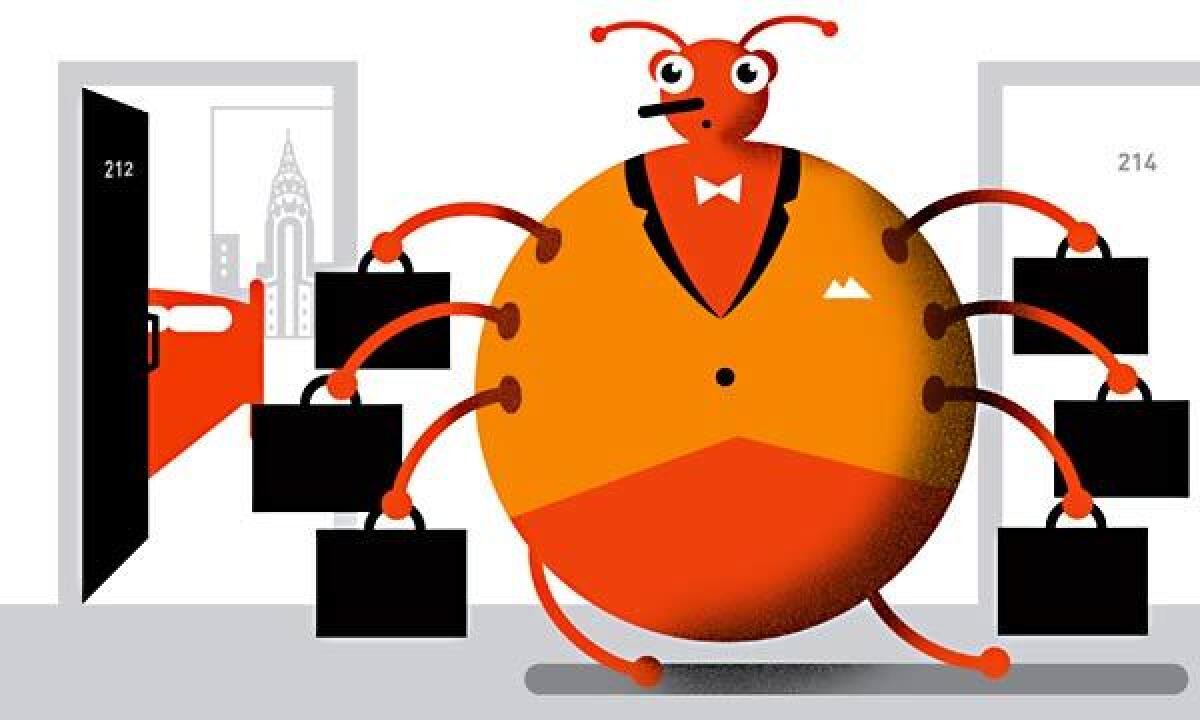On the Spot: A bedbug-free hotel stay in New York City

- Share via
Question: We are planning a trip to New York City next summer. Is there a list of bedbug-free hotels? How can we protect ourselves?
S. Penza, Camarillo
Answer: Bedbugs have become such an issue that several websites have sprung up to help travelers scope out hotels at their destination. Check out https://www.bedbugregistry.com and https://www.bedbugreports.com, and also look at TripAdvisor.com (search for “bed bugs” or “bedbugs”). You’ll find some pretty harrowing tales of these little suckers and how they can leave people scratching their heads (and face and legs and ankles, which is where they often bite) over how the bug has become the bane of many hoteliers’ existence.
Once thought eradicated in the Western world, bedbugs made a comeback, but why that happened depends on whom you ask. Some experts say the weak dollar encouraged foreign visitors, who brought the critters with them. Others say the insects gained a toehold after DDT was banned (in 1972) and new but less effective chemicals were introduced.
One thing is clear: Whether a hotel has bedbugs isn’t necessarily a sign of its luxury status or lack thereof. Any establishment can become their home, sweet home, as long as they have their own buffet line (and that, my friend, would be you).
So how do you protect yourself from these night stalkers? First thing to do (assuming you’ve checked to make sure the hotel isn’t on a “hot list”) is to haul out that folding luggage rack with the metal legs, says Brian DiCicco, the president of Pest Management of Texas. The bugs have a hard time getting a grip on those legs, so your suitcase and its contents may be protected from an invasion.
Next, “I actually take the sheets off the mattress and look at the seams on the bed — they can accumulate on the seams,” DiCicco says. (The bugs are big enough to see, generally about 0.2 inch — about the size of an apple seed.) The headboard can be another home, so he removes it (it often “pops off,” he says) and inspects. He also suggests looking for traces of fecal spotting, the dark brown stain that results from the blood the bug slurped up. And yes, it is as gross as it sounds.
DiCicco is a frequent traveler, so I asked him how many times he’s encountered the bugs in his hotel bed. Zero. “But I travel with bedbug dogs,” he said. (Like other dogs, bedbug dogs can detect the slightly sweet odor of these blood-engorged porkers and point to the infestation.)
If there’s any good news in this, it’s that bedbugs don’t generally transmit disease. They are unsettling, they are expensive to eradicate and they’re sneaky little snots, often traveling from room to room in a hotel looking for a new host. Some people react badly to the bites; others do not, but really, the biggest threat is to your state of mind. “It’s amazing how this insect can bring fear to its victims,” DiCicco says, “because it’s affecting you where you sleep. It causes insomnia and causes a lot of stress for a lot of people.”
When DiCicco comes home from a trip, he puts his clothing in plastic trash bags and leaves his suitcases in the garage. He washes the clothing before returning it to his bedroom — just in case something has hitched a ride home. That’s one souvenir you’d probably rather leave behind.
Have a travel dilemma? Write to travel@latimes.com. We regret we cannot answer every inquiry.
More to Read
Sign up for The Wild
We’ll help you find the best places to hike, bike and run, as well as the perfect silent spots for meditation and yoga.
You may occasionally receive promotional content from the Los Angeles Times.







